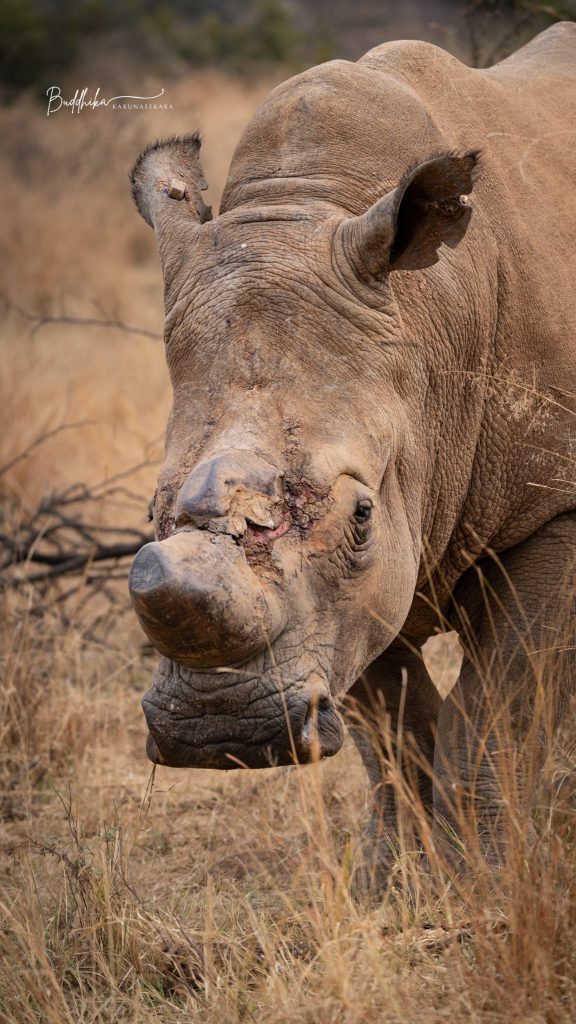
Massive and resilient, the white rhinoceros is one of the most iconic creatures of the African savannah. Its broad mouth, built for grazing on grasses, gives it its name, distinguishing it from the hook-lipped black rhinoceros. With its thick grey hide and its formidable double horns, the white rhino embodies both power and vulnerability. Once roaming vast stretches of Africa, it now survives in fragmented populations, its fate deeply tied to human action.
In the traditions of the Zulu people of South Africa, the rhino has been admired as a symbol of strength and stubborn courage. Folklore often portrays it as an animal that charges through obstacles, unstoppable in its determination. Among the Shona of Zimbabwe, the rhino appears in proverbs and tales as a creature of patience and endurance, one that does not seek trouble yet cannot be ignored when provoked. Such stories reflect a long-standing respect for the rhino’s presence on the land, a recognition of its role in the natural balance.
The rhino’s horn has also bound it to stories of desire and peril. In Swahili coastal traditions, the horn was once considered an object of prestige, traded with merchants who sailed the Indian Ocean routes. Across Asia, demand for horn grew, especially in China, where powdered rhino horn was incorporated into Traditional Chinese Medicine. It was believed to treat fever, convulsions, and even poison, though there is no scientific basis for such claims. Contrary to popular belief, it was not regarded as an aphrodisiac in Chinese practice. In more recent decades, Vietnam has become a centre of demand, where horn has been marketed as a supposed cancer cure and used as a luxury status symbol, sometimes consumed in social gatherings mixed with alcohol. This web of myth and prestige has drawn rhinos into a global crisis of exploitation.
Conservation narratives have reshaped how communities speak of the white rhino today. In KwaZulu-Natal, South Africa, the work of the Hluhluwe–iMfolozi reserve became legendary, as it was here that a small surviving population of southern white rhinos was protected and nurtured back from the brink in the 20th century. The dedication of rangers, often working alongside Zulu communities, turned the rhino into a symbol not only of survival but of shared guardianship.
Elsewhere, Maasai communities in Kenya link the presence of large animals like rhinos to the health of the land itself. Stories told around fires remind younger generations that the loss of a creature so powerful weakens the spirit of the savannah. Local conservancies in Laikipia and the Mara have taken up these lessons, embedding rhino protection into both cultural pride and economic survival through eco-tourism.
In China and Vietnam, cultural attitudes toward rhino horn are beginning to shift. Public awareness campaigns led by conservation groups have highlighted the cruelty of poaching and the lack of medical value in rhino horn. In Vietnam, celebrities and business leaders have publicly spoken out against its use, challenging the idea of horn as a status symbol. In China, state-backed initiatives have promoted the use of herbal and synthetic alternatives, with younger generations increasingly viewing rhino horn consumption as outdated and shameful. These changes in perception, though uneven, offer hope that cultural values which once endangered the rhino may also play a part in its survival.
Despite its immense frame and horns that inspire awe and fear, the white rhino is not an aggressor. Much of its life is spent grazing quietly, calves at its side, ears twitching at sounds of bird and wind. Its true presence lies not in charge or conquest but in the calm persistence with which it endures. To see a white rhino on the plains of Africa is to glimpse a survivor of deep time, a being shaped by myth and memory, carrying on a struggle that now entwines its fate with our own.
